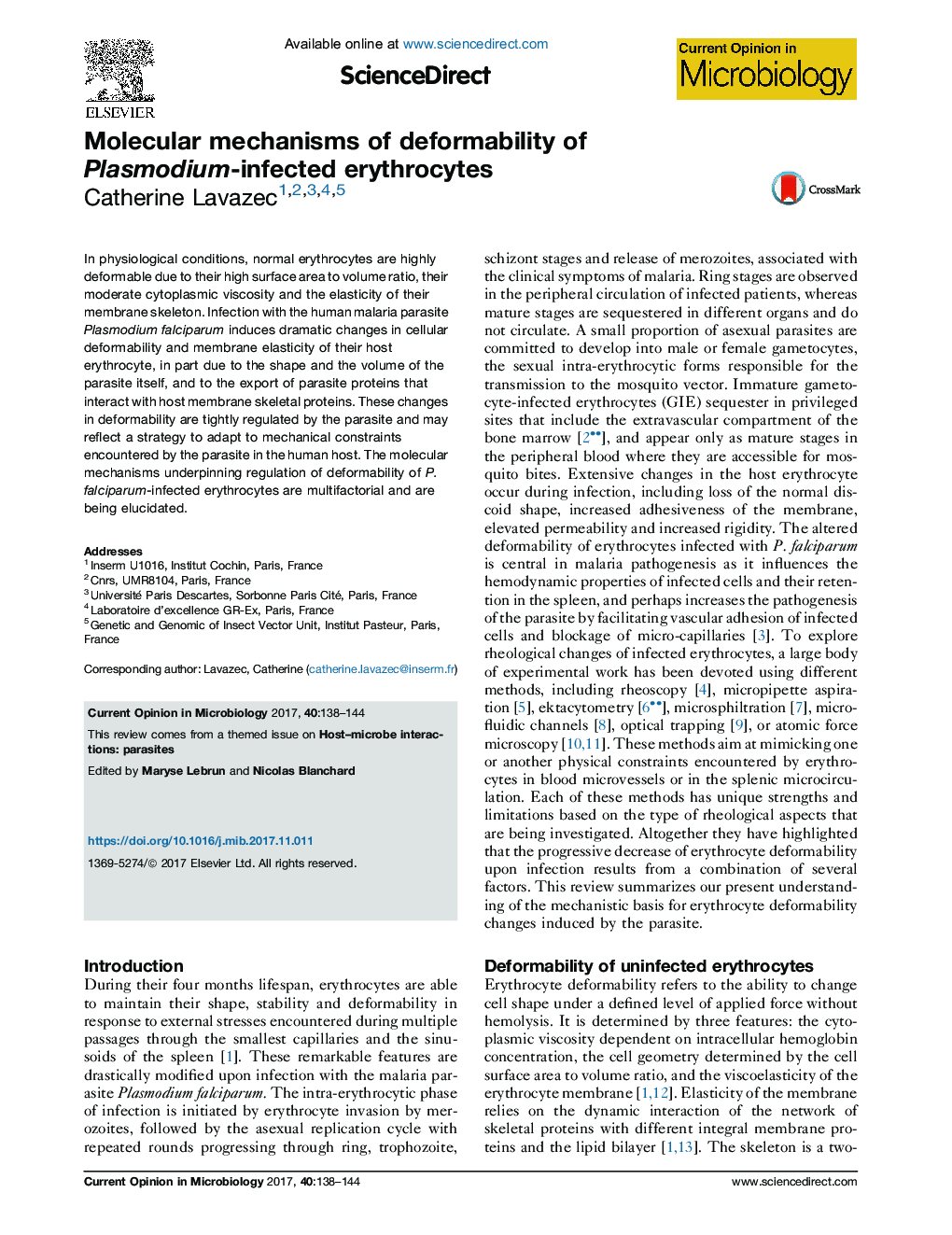| Article ID | Journal | Published Year | Pages | File Type |
|---|---|---|---|---|
| 8745126 | Current Opinion in Microbiology | 2017 | 7 Pages |
Abstract
In physiological conditions, normal erythrocytes are highly deformable due to their high surface area to volume ratio, their moderate cytoplasmic viscosity and the elasticity of their membrane skeleton. Infection with the human malaria parasite Plasmodium falciparum induces dramatic changes in cellular deformability and membrane elasticity of their host erythrocyte, in part due to the shape and the volume of the parasite itself, and to the export of parasite proteins that interact with host membrane skeletal proteins. These changes in deformability are tightly regulated by the parasite and may reflect a strategy to adapt to mechanical constraints encountered by the parasite in the human host. The molecular mechanisms underpinning regulation of deformability of P. falciparum-infected erythrocytes are multifactorial and are being elucidated.
Related Topics
Life Sciences
Immunology and Microbiology
Microbiology
Authors
Catherine Lavazec,
